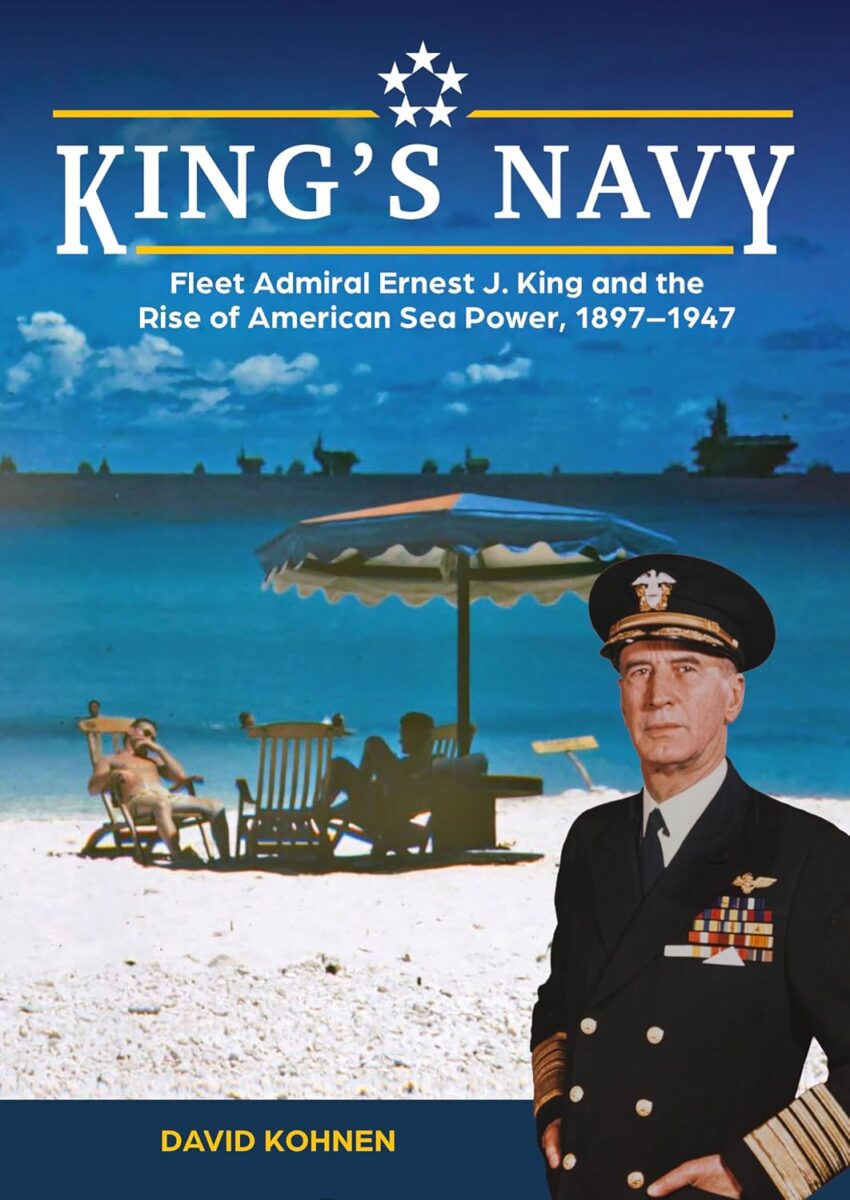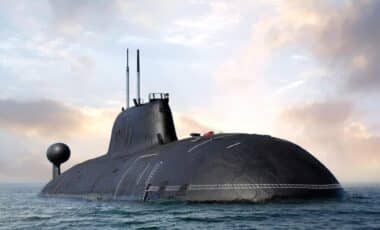Being there . . . . . to meet and greet the truly great World War II American Admiral of the Fleet
and Chief of Naval Operations, Ernest Joseph King, 1878 – 1956. Meanwhile, we U.S. Navy
buffs, enthusiasts, and aficionados instantly recognize, concur, and applaud what Christopher
M. Bell, author of “Churchill and Sea Power”, endorsed for the new Schiffer Military History
biography, by David Kohnen, “KING’S NAVY – – Fleet Admiral Ernest J. King and the Rise of
American Sea Power, 1897 – 1947”. Author Bell writes, “The Fleet Admiral has finally found the
biographer he deserves. David Kohnen’s monumental ‘warts-and-all’ study of the controversial
wartime leader critically dissects King’s complex personality and skill situating him right where
he belongs – at the very center of the rise of American sea power during the twentieth century.
This meticulously researched study is essential reading for anyone interested in U.S. Naval
history – and the future – of the American Navy.”
Reviewed and triple recommended by Don DeNevi
“KING’S NAVY – – Fleet Admiral Ernest J. King and the Rise of American Sea Power, 1897 –
1947”, by David Kohnen. Schiffer Military History, 4880 Lower Valley Road, Atglen, PA 19310:
606 pages, hardcover, 7¼” x 10 ½”, appropriately illustrated, brilliant Appendices, Bibliography,
Endnotes, along with a superb Index, $49.99. All told, as professionally classic a US Naval book
can be. Guaranteed to be the prize with loads of pride of the naval section of your fledgling
World War II library. Visit, Web: www.schifferbooks.com; Email: Info@schifferbooks.com.
Any treatise on Fleet Admiral King must include a systematic exposition or argument in
writing, i.e., a methodical discussion of the facts and principles involved so that the novice or
thoroughly knowledgeable reader can reach an appropriate conclusion for him or herself to
educate others. As a retired college educator, then state prison adult basic education
instructor, this reviewer would unequivocally award author David Kohnen an A+ for his
masterful military insight and historical literary achievement of enriching U.S. Naval history.
Fifty years in the making, the chapters describing “King’s Navy” emerge defiantly from near-
utter destruction on 7 December 1941 to record the building of the greatest armada in world
history with nearly 7,000 new warships, and, almost equally important, a capable merchant
marine within roughly eighteen months. The book jacket front cover is apropos, a b & w private
photo of “Beer Beach” off-duty able seamen slumbering in the sun (Photo credit: Life
Magazine/Shutterstock), as a fleet of 15 war vessels including four aircraft carrier are
silhouetted at anchor in the Ulithi Atoll background. King, in full Fleet Admiral uniform, stands
before all of us readers, both hands in his handsome official uniform jacket pockets, a hint of a
smile on his lips, all congealed into one shot signaling America standing by ready for action
anywhere, especially enemy contested waters in the Fleet Admiral’s campaign to “wage peace”
in the global sea world.
In June of 1948, R. S. Edwards, Admiral, USN, Retired, wrote a rebuttal against assertions
made by Henry L. Stimson, President Roosevelt’s Secretary of State who had twice-served as an
appointed Secretary of War, against Fleet Admiral King. Nasty. After all, Franklin Delano felt
King was the only man of expertise available who could turn the old American navy around in
months after Pearl before Japan gobbled up U.S. bases in the Pacific, perhaps even Hawaii. The
President and U.S. Navy had no time for silly paranoia, crappy grudges, and worthless jealousy.
Mr. Stimson’s opinions didn’t faze or concern the President in the least. (See Appendix L, pages
494 – 495.) Wrote Retired Admiral Edwards in his opening paragraph, which says it all about
Stimson the American non-mariner Secretary of War, and which us buffs will read about in the
coming weeks should we order the mammoth book in weight and size volume: “. . . a great man
and a wise statesman, this Stimson, but a man strong-headed in his likes and dislikes and, in his
later years a holder of petty grudges he clung to long after the Pacific war, grudges against the
admirals in general, Admiral King barely being the exception. Why? Because of various reasons,
mainly that King’s exercise of command consisted of assignment of missions, allocation of
forces, and formalization of standard tactical instructions. The operating commanders were
responsible for carrying out the missions with the forces assigned to them. This realistic,
common-sense system won battles and ultimately wars. General Marshall used it in his
European campaigns. Edwards spends the rest of his rebuttal against the “aloof mistrust”
assertions thrown by Stimson against the admirals in general, and, indirectly but softly, at King
who, it seems, he had quietly respected.
High, in fact, extraordinarily high, kudos to David Kohnen for immaculate presentations of
the accounts with matchless narrative skill. This nosey reviewer must wonder why the US Naval
Institute Press, once the literary leader in the publishing of all sound, nay, best, naval
biographies, autobiographies, and sea and air battles, didn’t gobble up this stunner as its way to
be designated, “classic”. Has Schiffer Publishing usurped the decades-long NIP leadership role
of printing the best in American naval histories?








